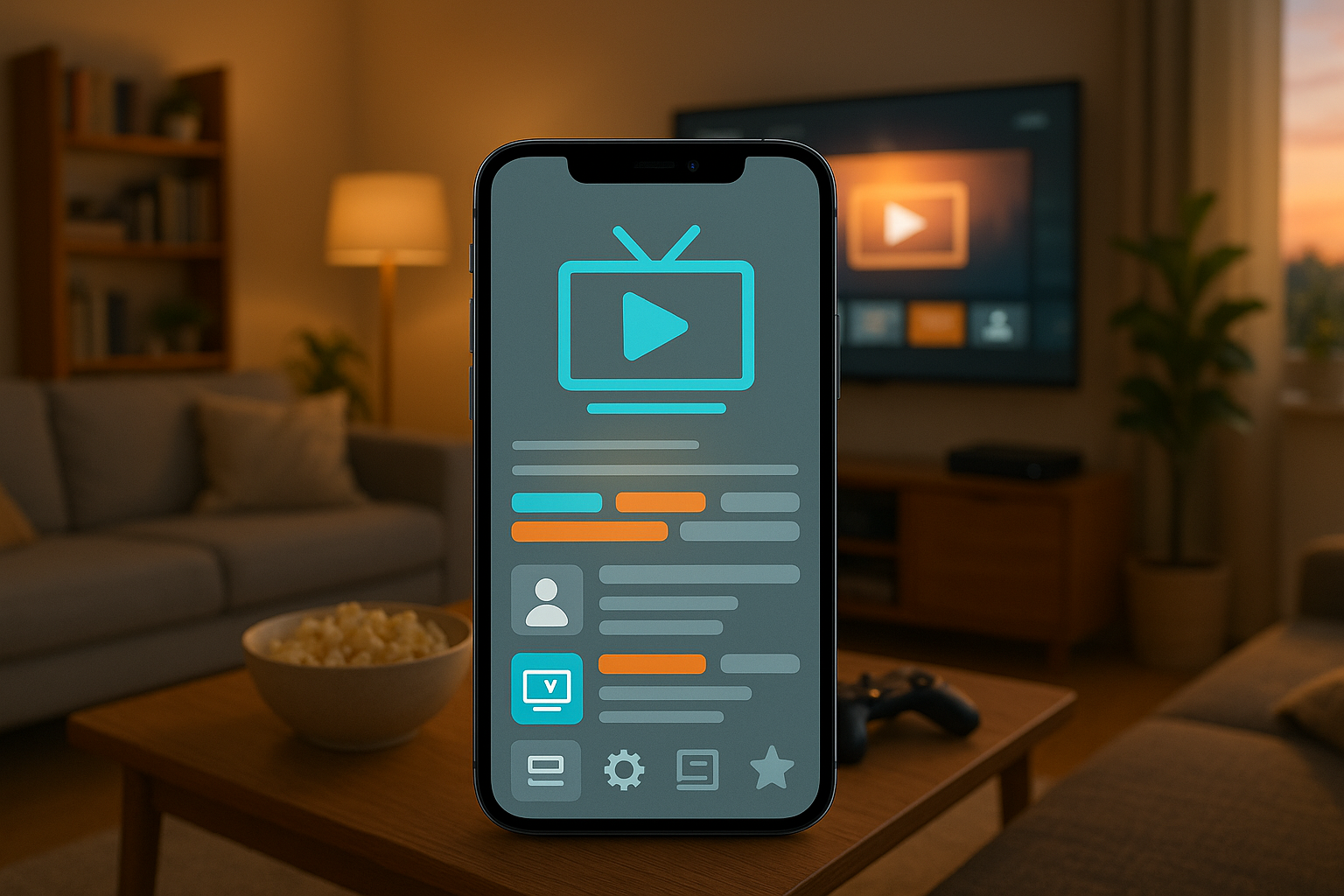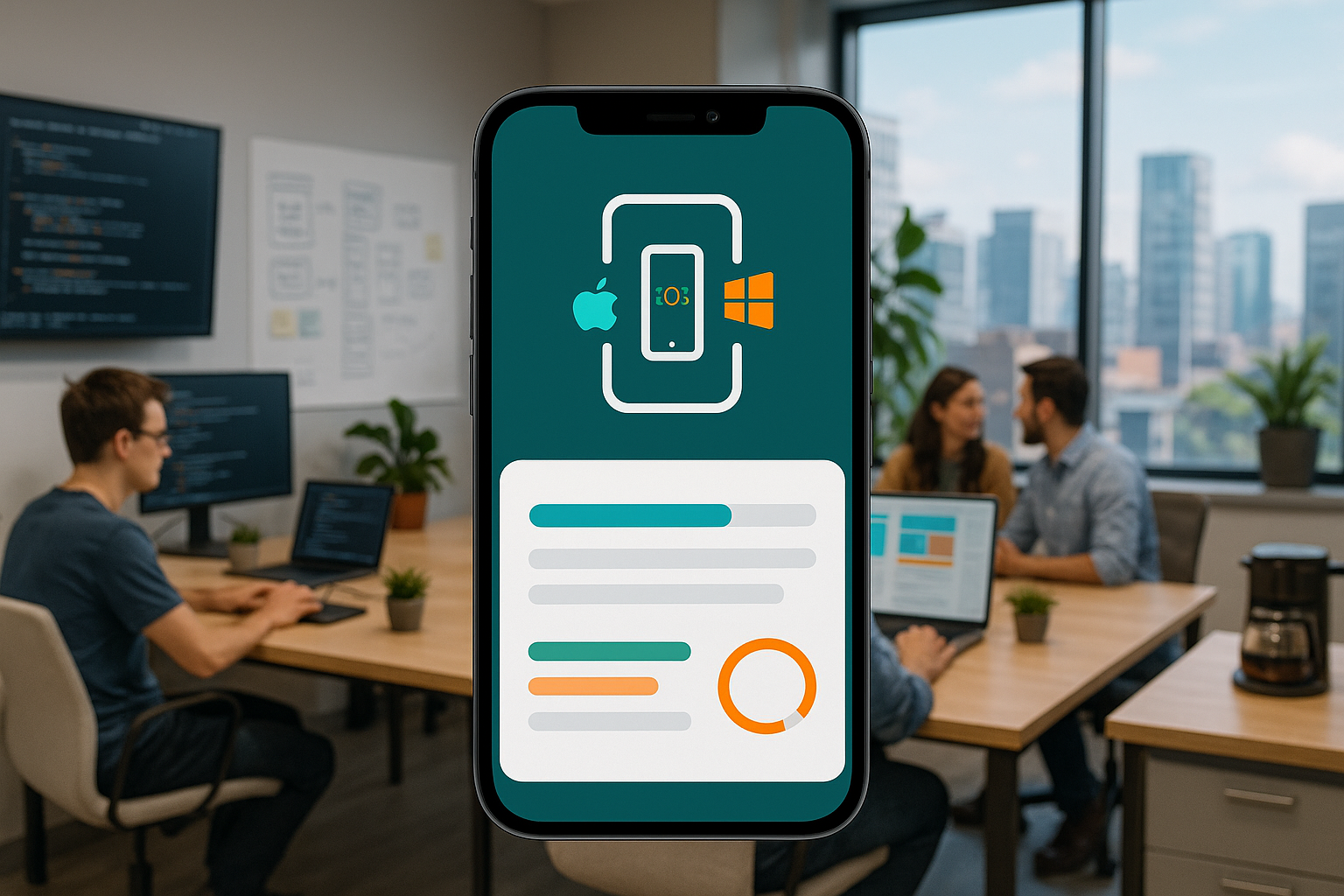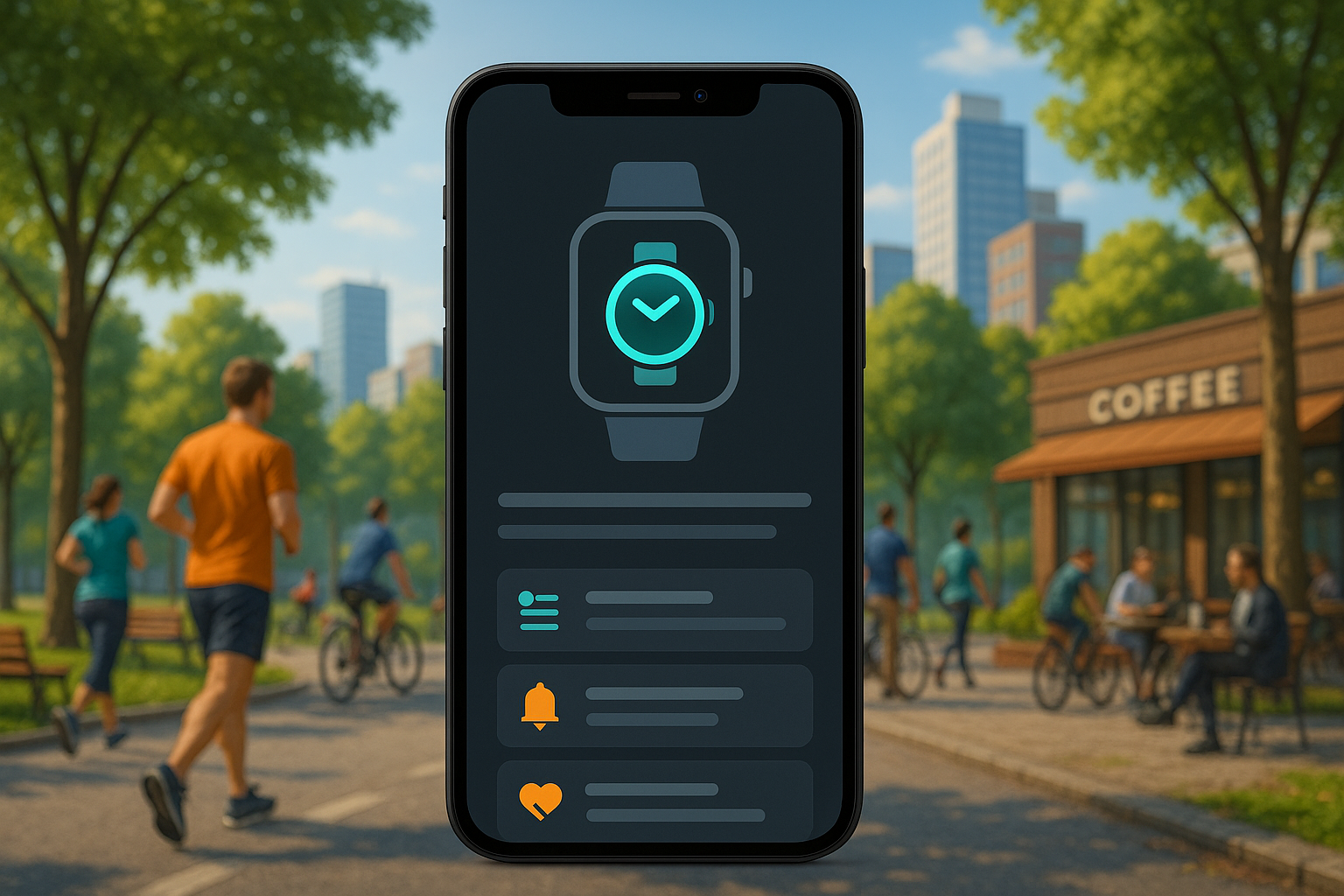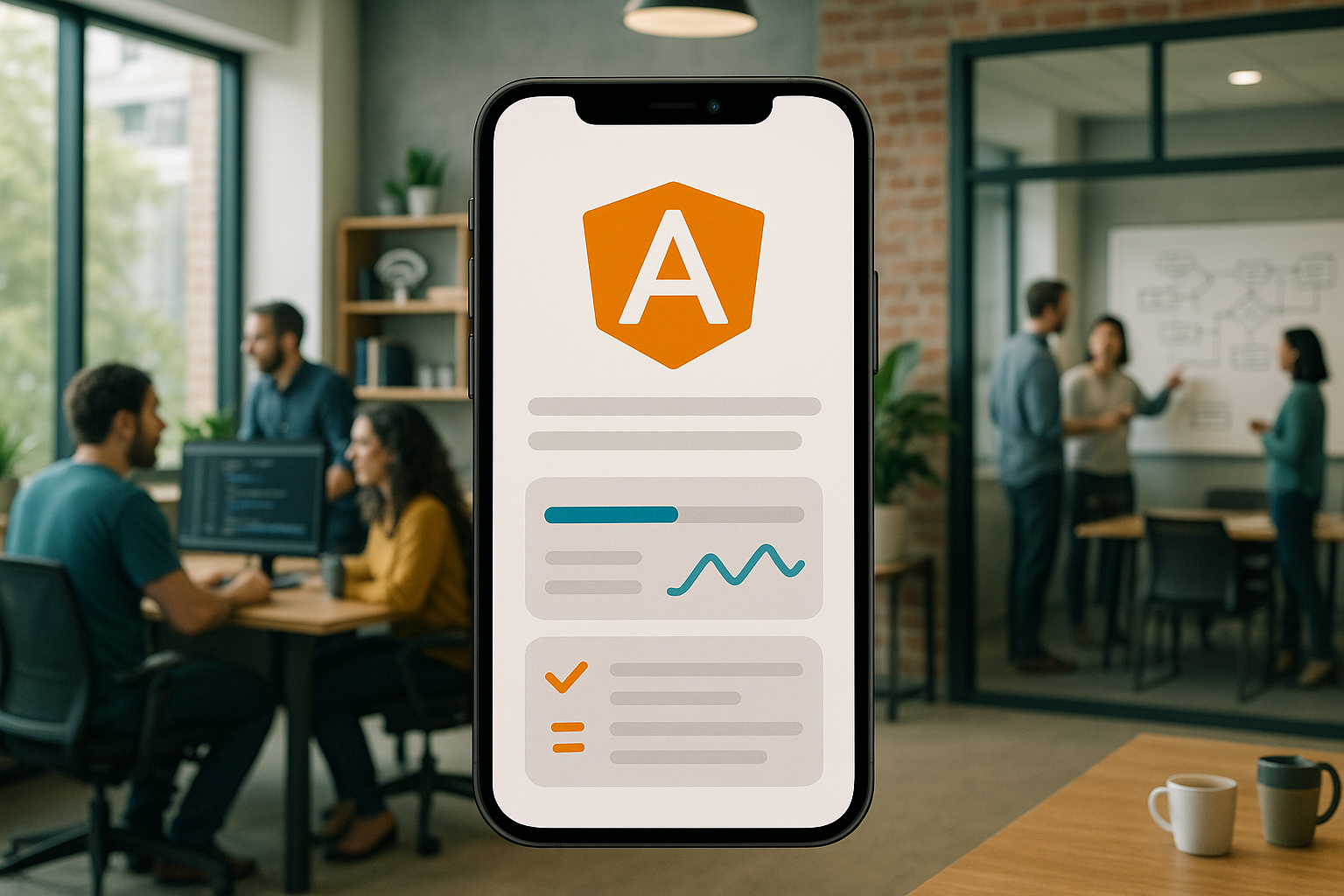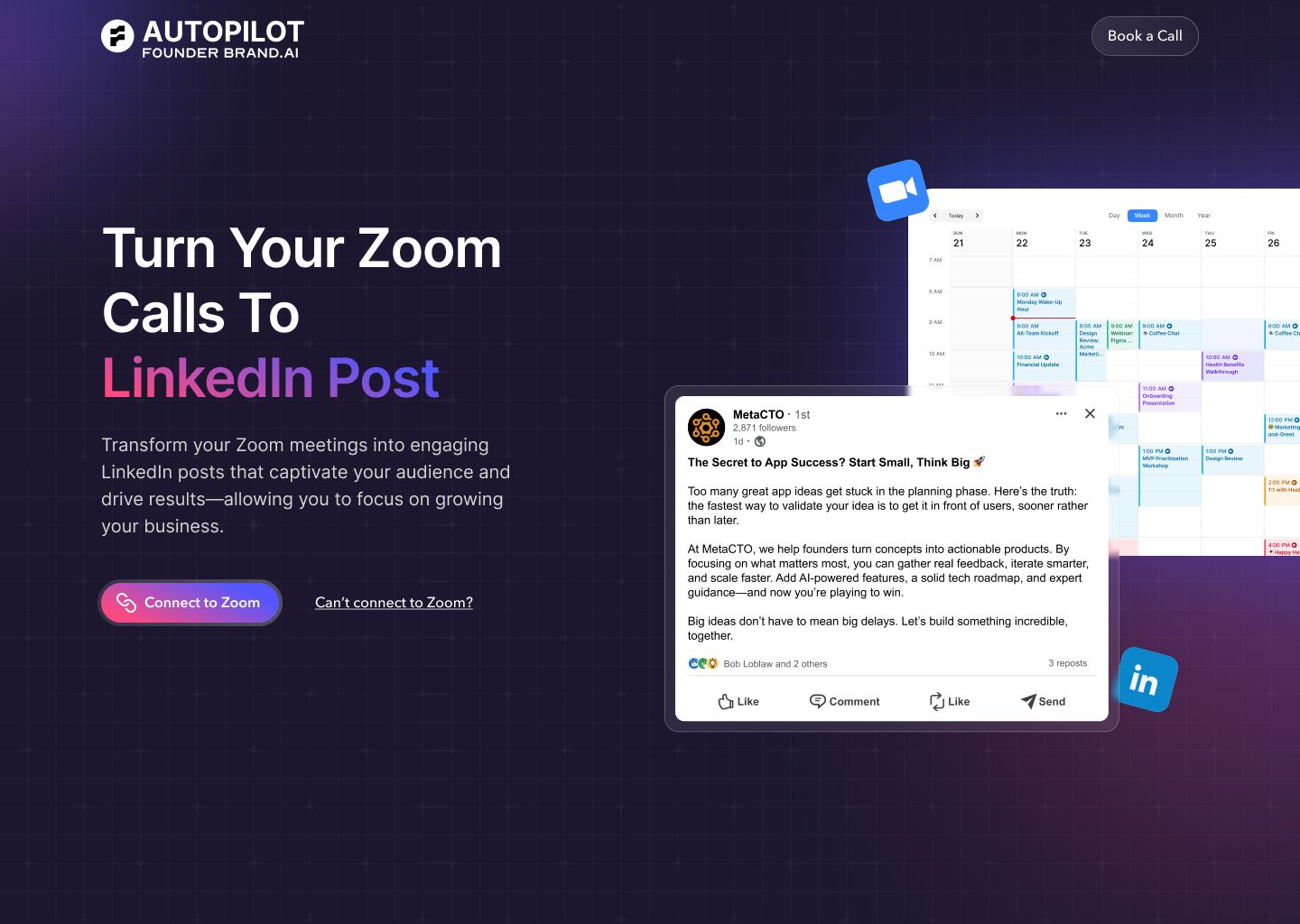Introduction
The living room has become the new frontier for digital content, and at its heart lies the smart TV. With millions of households worldwide using Android TV OS, the opportunity to capture a dedicated audience directly on their largest screen is immense. However, capitalizing on this opportunity is fraught with unique and often underestimated challenges. Developing an Android Smart TV app is not merely a matter of scaling a mobile application; it is a distinct discipline that demands a specialized approach to design, development, and testing. From navigating a fragmented hardware ecosystem to crafting an intuitive “10-foot” user experience, the path to a successful TV app is complex.
Many businesses with great content or innovative ideas find their in-house teams, experts in web or mobile, struggling to adapt to the constraints and paradigms of the TV platform. This can lead to ballooning budgets, extended timelines, and a final product that fails to meet user expectations. This article will serve as your comprehensive guide to understanding this landscape. We will delve into what an Android Smart TV app truly is, explore the significant difficulties of developing one in-house, and outline the different categories of apps you can build. Furthermore, we will break down the cost considerations and introduce you to the top development companies that can help bring your vision to life.
As a top US AI-powered app development firm with over 20 years of experience, we at MetaCTO have guided countless businesses through the intricacies of application development. We transform ambitious ideas into polished, market-ready products, whether on a 6-inch phone or a 60-inch television. Our expertise in creating robust, scalable, and engaging applications positions us to solve the very problems this article will explore. We are not just developers; we are strategic partners dedicated to ensuring your project’s success from concept to launch and beyond.
What is an Android Smart TV App?
At its core, an Android Smart TV app is a software application designed specifically to run on the Android TV operating system. This is a critical distinction. It is not simply a mobile app stretched to fit a larger display. Instead, it is a purpose-built experience engineered for a fundamentally different user interaction model: the “10-foot user experience.”
Imagine a user sitting on their couch, ten feet away from the screen, holding a remote control. They are not using a precise touchscreen; they are navigating with a directional pad (D-pad) and a select button. This context dictates every aspect of the app’s design and functionality. User interfaces must be clean, with large, easily readable text and high-contrast visuals. Navigation must be logical and predictable, flowing seamlessly from left-to-right and up-and-down. The focus must always be on the content, making it as effortless as possible for the user to find and consume what they are looking for.
The Android TV platform is home to a variety of applications that cater to this unique environment. While many associate smart TVs exclusively with video streaming, the ecosystem is much richer. The platform supports a range of app types, each with its own set of technical considerations and user expectations. Based on the Android developer framework, these applications generally fall into one of several key categories:
- TV Playback Apps: These are the most recognizable applications on the platform, dedicated to delivering video and audio content. They form the backbone of the smart TV experience.
- TV Games: These applications leverage the large screen and potential for connected game controllers to provide immersive gaming experiences, from simple casual games to more complex titles.
- TV Input Services: This is a more technical category that allows apps to integrate their content directly into the Android TV home screen and live channel guide, presenting their media streams as if they were traditional broadcast channels.
Building for this environment requires a deep understanding of the platform’s guidelines, capabilities, and limitations. A successful Android TV app feels like a natural extension of the television itself, providing value and entertainment with an interface that is both powerful and invisible.
Reasons That it is Difficult to Develop a Android Smart TV App In-House
While the prospect of developing an in-house Android TV app can seem appealing for control and cost savings, it often conceals deep-seated complexities that can derail a project. The challenges extend far beyond writing code; they are rooted in the very nature of the smart TV ecosystem. Here are the primary reasons why in-house development is so difficult.
The Hardware Fragmentation Nightmare
The single greatest challenge in Android TV development is the immense fragmentation of the hardware market. Unlike the more controlled ecosystems of mobile devices, the “Android TV” label applies to a vast and diverse array of products from numerous manufacturers. This includes high-end televisions from Sony, Philips, and Sharp, as well as a plethora of set-top boxes and streaming sticks from companies like NVIDIA and countless others.
Each of these devices comes with its own unique combination of screen resolutions, processing power, memory, and custom Android OS skins. An app that performs flawlessly on a high-end Sony Bravia TV might be sluggish or even crash on a budget-friendly set-top box. This variability means that developing for “Android TV” is not a singular task but a continuous effort to support a moving target of hardware specifications. An in-house team must constantly research, acquire, and account for these differences, a task that requires significant resources and specialized knowledge.
The Prohibitive Cost and Complexity of Testing
This hardware fragmentation leads directly to the next major hurdle: testing. To ensure a quality user experience, an application must be rigorously tested across a representative sample of popular devices. For an in-house team, this presents a daunting logistical and financial problem.
The facts are stark: using physical devices in testing Android TV app development can significantly increase development expenses. Imagine the capital outlay required for a company to purchase just a dozen different TV models and set-top boxes. This can easily run into tens of thousands of dollars before a single user downloads the app. This expense doesn’t just inflate the budget; it can also reduce the potential project ROI, making it harder to justify the investment in the first place.
Beyond the initial purchase, the team must manage, maintain, and update this physical device lab. This adds overhead and diverts valuable developer time away from building features. The logistical challenge of testing on this scale is one of the most common reasons in-house TV app projects fail to meet their goals.
The Unique User Experience (UX) Paradigm
In-house teams, even those with extensive experience in mobile app development, often underestimate the radical shift in design philosophy required for the TV. The 10-foot experience, governed by a D-pad remote, demands an entirely new way of thinking about navigation, focus management, and information architecture.
Key questions that are simple on mobile become complex on TV:
- How does the user know which element is currently selected?
- Is the navigation path logical and efficient, or does it require an excessive number of clicks?
- Can users easily input text with an on-screen keyboard using a remote?
- Is the layout optimized for comfortable viewing from a distance?
Getting this wrong results in a clunky, frustrating experience that will cause users to abandon the app quickly. Mastering TV UX is a specialized skill. An agency like ours has dedicated UX/UI designers who live and breathe these principles. We ensure that the final product feels intuitive and native to the platform, a critical factor for user retention. Hiring an expert firm like MetaCTO sidesteps these challenges. We bring the pre-existing infrastructure, testing partnerships, and specialized UX expertise needed to build a high-quality TV app efficiently and cost-effectively.
Different Types of Android Smart TV Apps
The Android TV ecosystem is diverse, offering developers the opportunity to create a wide range of applications tailored for the living room experience. Understanding these categories is the first step in defining your product strategy.
TV Playback Apps
This is the quintessential category for smart TVs. TV playback apps are focused on delivering video-on-demand (VOD) and live streaming content. This includes global giants like Netflix and YouTube, niche streaming services for specific genres, and apps for traditional media companies bringing their broadcast content to the digital platform.
Developing a playback app involves more than just displaying a video file. It requires robust solutions for:
- Digital Rights Management (DRM): Protecting content from piracy using technologies like Google Widevine.
- Adaptive Bitrate Streaming: Automatically adjusting the video quality based on the user’s internet connection to ensure smooth playback without buffering.
- Content Discovery: Designing an engaging and intuitive interface for users to browse vast libraries of content.
- User Account Management: Handling subscriptions, watchlists, and viewing history seamlessly.
At MetaCTO, we have direct experience in this domain, having helped clients like Mamazen transform their digital content library into a successful video streaming mobile app with subscription revenue. The principles of creating scalable, engaging video experiences translate directly to the TV platform.
TV Games
Gaming on the big screen offers a uniquely immersive experience, and Android TV provides a platform for developers to bring their creations to the living room. TV games can range from simple, casual titles controlled with the standard D-pad remote to complex, graphically-intensive games that require a dedicated Bluetooth gamepad.
Key considerations for TV game development include:
- Controller Support: Ensuring the game works flawlessly with a variety of input devices.
- Performance Optimization: Adapting the game’s performance to run smoothly across the wide range of Android TV hardware.
- UI/UX for the Big Screen: Designing menus and in-game interfaces that are clear and navigable from a distance.
TV Input Services
This is a more specialized but powerful category of Android TV apps. A TV Input Service allows an application to supply its own content channels directly into the Android TV home screen and the “Live Channels” guide. This means a provider of linear, live-streaming content can have its channels appear alongside traditional over-the-air channels, creating a deeply integrated and seamless user experience.
This is ideal for:
- Live news providers.
- Live sports streaming services.
- Content creators with a schedule of linear programming.
Developing a TV Input Service requires a deep understanding of the TV Input Framework (TIF), a technical component that manages the interaction between the app and the system’s TV services. When implemented correctly, it can significantly boost content visibility and user engagement.
Cost Estimate for Developing an Android Smart TV App
Determining a precise cost for developing an Android TV app without a detailed project scope is impossible. The final price tag depends on factors like feature complexity, design requirements, and backend infrastructure. However, one of the most significant—and often overlooked—cost drivers is the approach to testing.
The Hidden Cost of Hardware Testing
As established, the sheer number of Android TV devices creates a massive testing challenge. If an in-house team decides to build a physical device lab, the costs accumulate rapidly. Purchasing a range of TVs and set-top boxes can easily exceed $10,000 to $20,000 in upfront hardware expenses alone.
This direct cost has a ripple effect. It directly impacts the project’s financial viability, as every dollar spent on hardware is a dollar not spent on development or marketing. This reality is why using physical devices in testing can reduce potential project ROI. It creates a significant financial barrier before the project can even begin to generate revenue, making it a risky proposition for startups and even established businesses.
A Smarter, More Cost-Effective Approach
Fortunately, there is a far more efficient and economical solution. The modern approach to tackling hardware fragmentation is to leverage cloud-based testing environments connected to physical devices rented from owners or third-party providers.
This model allows developers to:
- Access a vast library of real Android TV devices remotely through a web browser.
- Run automated and manual tests on hundreds of different hardware configurations.
- Achieve comprehensive testing across a wide range of TV models without purchasing each device.
By partnering with a development agency that utilizes these cloud-testing platforms, you eliminate the massive capital expenditure on hardware. This dramatically lowers the barrier to entry and allows the budget to be focused on what truly matters: building a high-quality application.
At MetaCTO, we integrate these smart testing strategies into our development workflow. Our partnerships with leading cloud-testing providers give your project access to the extensive device coverage needed for a robust launch, all without the crippling cost of building your own device lab. This approach not only saves money but also accelerates the development timeline, allowing you to get to market faster. Our Rapid MVP Development service is built on this principle of efficiency, delivering a market-ready app in 90 days.
Top Android Smart TV App Development Companies
Choosing the right development partner is the single most important decision you will make. You need a team that not only has the technical skills but also the strategic insight to navigate the TV ecosystem. Here are some of the top companies in the space.
1. MetaCTO
As a leading US-based AI and mobile app development agency, we bring a unique combination of strategic thinking and technical excellence to Android TV development. With over 20 years of experience and more than 120 successful projects launched, we are not just a service provider; we are your strategic partner in growth. Our entire process is designed to de-risk your investment and maximize your chances of success.
Our approach covers every stage of the product lifecycle:
- Validate: We don’t just build what you ask for; we help you validate the idea first. We turn your concept into a Minimum Viable Product (MVP) quickly, allowing you to test the waters with real users, gather feedback, and secure funding—all on a tight budget and timeline.
- Build: We handle the entire end-to-end process of custom mobile app development, which we expertly adapt for the Android TV platform. From architecture and coding to UI/UX design, we ensure your app is market-ready and delivers a seamless experience from day one.
- Grow and Monetize: Launching the app is just the beginning. We help you acquire more users and keep them engaged using A/B testing and analytics. We work with you to implement the most effective app monetization strategies, whether through subscriptions, ads, or in-app purchases.
- Evolve: As your business scales, we ensure your app evolves with it. We can integrate cutting-edge technology, leveraging our expertise in AI Development to build features like personalized content recommendation engines that keep you ahead of the competition.
What sets us apart is our deep technical partnership model. We can act as your fractional CTO, helping you build a technology roadmap that increases profit and valuation. We make the complex process of app development painless, transforming your big idea into an app that’s better than you could have imagined.
2. Oxagile
Oxagile is a development company that offers custom Smart TV app development for Android TV. They focus on creating tailored solutions for businesses looking to enter the smart TV market.
3. Promwad
Promwad is another firm in the space that offers Smart app TV development for Android TV. They provide development services for companies targeting the Android TV operating system.
4. Fx Digital
Fx Digital is a well-regarded company with a strong focus on TV platforms. They offer Android TV app development and have a broad range of expertise. Their key strengths include:
- Platform Versatility: Fx Digital works with all major TV-connected devices and platforms, including Samsung, Apple, Playstation, LG, Roku, Android, Panasonic, Fire TV, and Xbox.
- Global Streaming Knowledge: They understand the challenges of streaming across multiple regions and devices, which is crucial for apps with an international audience.
- Comprehensive Support: Fx Digital provides support at all project stages and is known for constantly giving industry insights to its clients.
Conclusion
Developing an application for Android Smart TV is a journey into one of the most exciting and rapidly growing digital arenas. It offers a direct line to millions of users in their most comfortable environment: the living room. However, as we have explored, this path is paved with unique challenges. The fragmentation of hardware, the prohibitive cost of physical device testing, and the specialized demands of the 10-foot user experience can quickly overwhelm even experienced in-house teams.
This guide has walked you through the essentials: what an Android TV app is, the different forms it can take—from media playback to gaming—and the critical cost factors driven by testing methodologies. We have seen how a strategic, cloud-based testing approach can mitigate costs and reduce risk, and we have identified the key players who can help you build your application.
Ultimately, success on this platform requires more than just code. It requires a partner who understands the ecosystem, from the technical nuances of the TV Input Framework to the business strategies of user monetization. It requires a team that has navigated these challenges before and has a proven process for delivering high-quality, engaging, and profitable applications. At MetaCTO, we have spent two decades honing that process. We have launched over 100 apps, helped our clients raise over $40 million in funding, and turned ambitious ideas into market-leading products.
If you are ready to bring your app to the living room screen, you don’t have to go it alone. Let’s build your app the right way, from day one.
Talk with an Android Smart TV app development expert at MetaCTO today to discuss your vision and build a roadmap for success.
